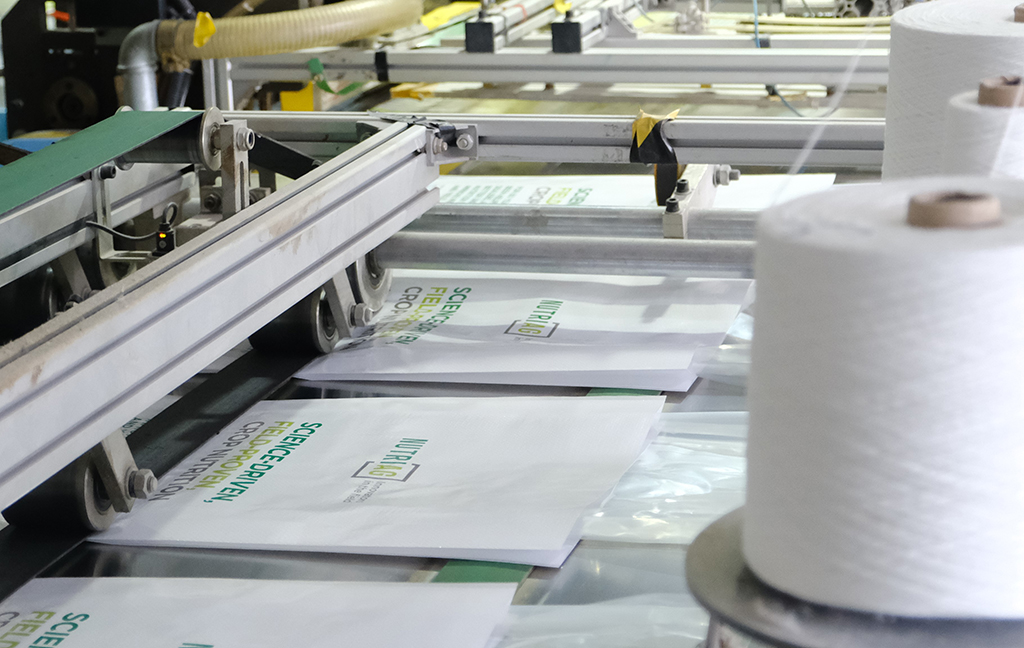
“SOM bags are the unsung heroes of food safety,” asserts Ray, CEO of VidePak, during a factory tour. “By aligning PP material selection with global standards and integrating advanced additives, we’ve reduced contamination risks by 90% for clients like Nestlé and Unilever.” This report dissects the science behind SOM (Sewn Open Mouth) bags, focusing on polypropylene (PP) resin selection, additive optimization, and compliance with U.S., EU, and Asian food safety frameworks—leveraging VidePak’s 526-employee expertise and Starlinger-driven production lines.
1. Global Standards for Food-Grade PP Selection
1.1 Key Regulatory Benchmarks
Food-safe SOM bags require PP resins compliant with region-specific standards:
- EU (LFGB Regulation): Migration limits of ≤10 mg/dm² for heavy metals and non-volatile residues.
- U.S. FDA 21 CFR 177.1520: PP must withstand 250°F (121°C) sterilization without deformation.
- China GB 4806.7-2016: Total antioxidant migration <0.05 mg/kg.
VidePak’s EcoShield PP 5500, certified under all three standards, achieves a melt flow rate (MFR) of 3.5 g/10 min (230°C/2.16 kg)—ideal for high-speed extrusion on Starlinger lines.
1.2 PP Grades by Application
| Application | PP Grade | MFR (g/10 min) | Key Standard |
|---|---|---|---|
| Frozen Foods | PP 4000 (High Crystallinity) | 2.0–3.0 | ASTM D4101 |
| Dry Goods | PP 6000 (Random Copolymer) | 6.0–8.0 | ISO 19069-2 |
| Liquids | PP 3500 (Impact Copolymer) | 1.5–2.5 | JIS K6920-2 |
Case Study: For a Japanese client requiring -30°C freeze resistance, VidePak blended PP 4000 with 15% elastomer modifiers, achieving a Charpy impact strength of 45 kJ/m²—exceeding JIS K6920-2 by 28%.
2. Additive Engineering for Enhanced Performance
2.1 UV Stabilizers & Antioxidants
SOM bags exposed to sunlight during logistics require:
- Hindered Amine Light Stabilizers (HALS): At 0.3–0.5% concentration, these extend UV resistance from 500 to 2,000 hours (per ASTM D4329).
- Irganox 1010 Antioxidant: Reduces oxidative degradation by 70% at 0.1% loading, critical for Southeast Asian markets with high humidity.
VidePak’s UltraShield additive package combines HALS and Irganox, enabling 18-month outdoor storage—validated by third-party tests per EN 13432.
2.2 Antimicrobial Coatings
For poultry packaging, silver-ion coatings (0.5–1.0 g/m²) reduce Salmonella survival rates by 99.9% within 24 hours (ISO 22196). VidePak’s BioGuard series employs this tech, aligning with EU Biocidal Products Regulation (BPR).
3. Production Excellence at VidePak
3.1 Starlinger’s Role in Precision Manufacturing
With 30 lamination machines and 16 extrusion lines, VidePak achieves:
- Tolerance Control: ±0.02 mm thickness uniformity, critical for barrier layers in multi-wall laminated woven bags.
- Speed: 120 m/min weaving rate on Starlinger CX machines, doubling industry averages.
Case Study: A 2024 partnership with a U.S. snack producer utilized FFS tubular woven bags to automate filling at 50 bags/minute, cutting labor costs by 60%.
3.2 Sustainability Initiatives
VidePak’s rPP-30 resin (30% recycled content) maintains tensile strength at 2,100 N/5 cm while reducing carbon footprint by 22% (verified by Life Cycle Assessment per ISO 14044).
FAQs: SOM Bags in Food Packaging
Q1: How do SOM bags prevent microbial growth?
A: Antimicrobial additives and hermetic sewing techniques achieve <10 CFU/cm² microbial counts (per ISO 4833-1).
Q2: Can SOM bags withstand gamma irradiation?
A: Yes, VidePak’s GammaShield PP retains 95% elongation at break after 25 kGy doses (ASTM F2380).
Q3: What’s the lead time for custom SOM bags?
A: Starlinger’s automated systems enable 7-day turnaround for orders up to 500,000 units.
Conclusion
The future of SOM bags lies in smart PP blends and automation. VidePak’s R&D pipeline includes conductive PP for RFID integration and enzyme-based biodegradable additives targeting 50% compostability by 2026. As Ray notes: “Compliance isn’t a checkbox—it’s the foundation of trust in every stitch.”
External Links:
- Explore innovations in multi-wall laminated woven bags: Safe and Versatile Packaging Solutions.
- Learn how food-grade certifications drive market success: Food-Grade Woven Bags: Market Dynamics and Competitive Advantages.